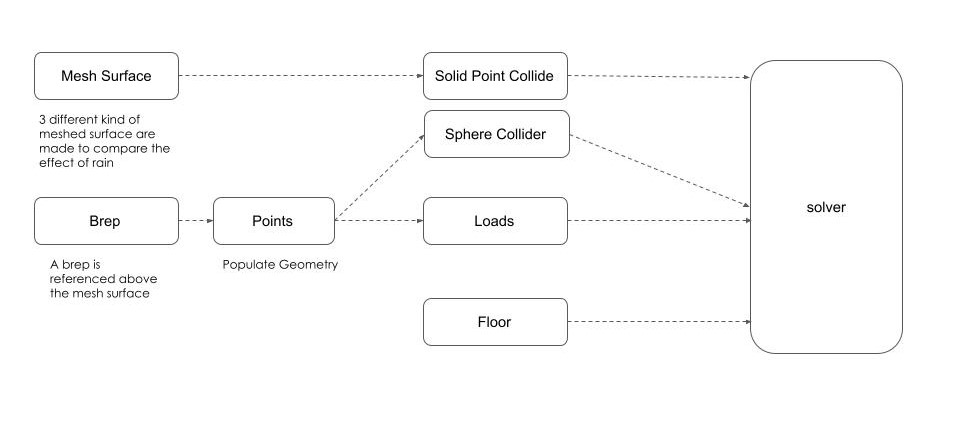Fluid dynamics is a branch of fluid mechanics that studies the motion and behavior of fluids, which include liquids and gases. It focuses on understanding how fluids respond to different forces, pressures, and environmental conditions. This field is fundamental to various scientific and engineering applications, ranging from the study of natural phenomena like atmospheric and oceanic flows to the design of aircraft and the optimization of industrial processes.
Importance in Physics, Engineering, and Environmental Sciences
Fluid dynamics plays a crucial role in physics, engineering, and environmental sciences due to its broad applicability in understanding and modeling the behavior of fluids. Here are some aspects highlighting its importance in these fields:
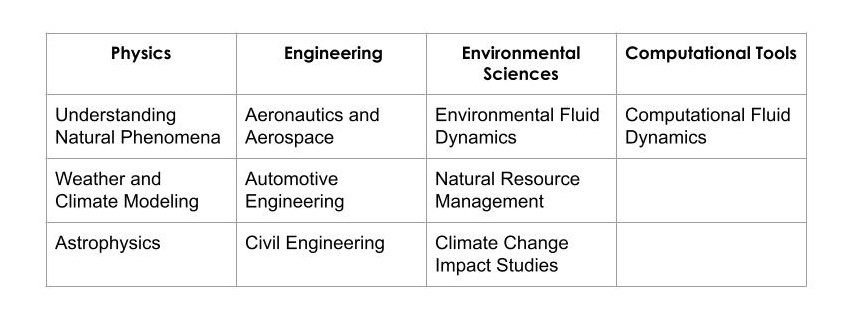
Examples of fluid dynamics
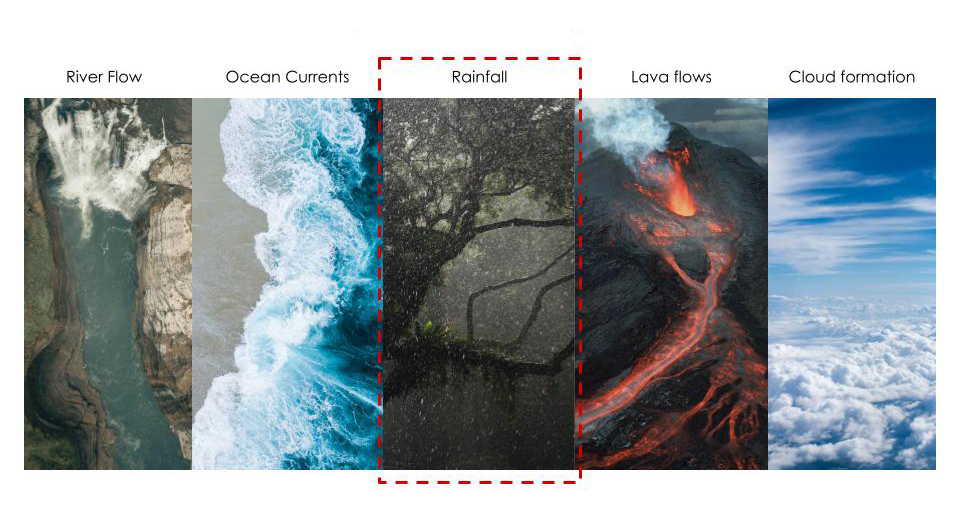
Rainfall refers to the amount of precipitation, in the form of water droplets, that falls from the atmosphere to the Earth’s surface. This precipitation occurs when moist air cools and reaches its dew point, causing the water vapor to condense into tiny droplets or ice crystals that fall as rain, snow, sleet, or hail, depending on the atmospheric conditions.
Formation of rain is also called as The hydrological cycle or water cycle, describes the continuous movement of water on, above, and below the surface of the Earth. It involves a series of processes through which water is circulated and redistributed throughout the planet. The key components of the hydrological cycle include evaporation, condensation, precipitation, runoff, infiltration, and transpiration.
Size of Rainfall
Minimum size of raindrop is 0.5 mm
Maximum size of raindrop is 6.0 mm
Intensity of Rainfall
Light Rain upto 2.5 mm/hr
Moderate rain 2.5 mm/hr to 7.5mm/hr
Heavy rain > 7.5 mm/hr
Violent rain > 50 mm/hr
Types of Rainfall
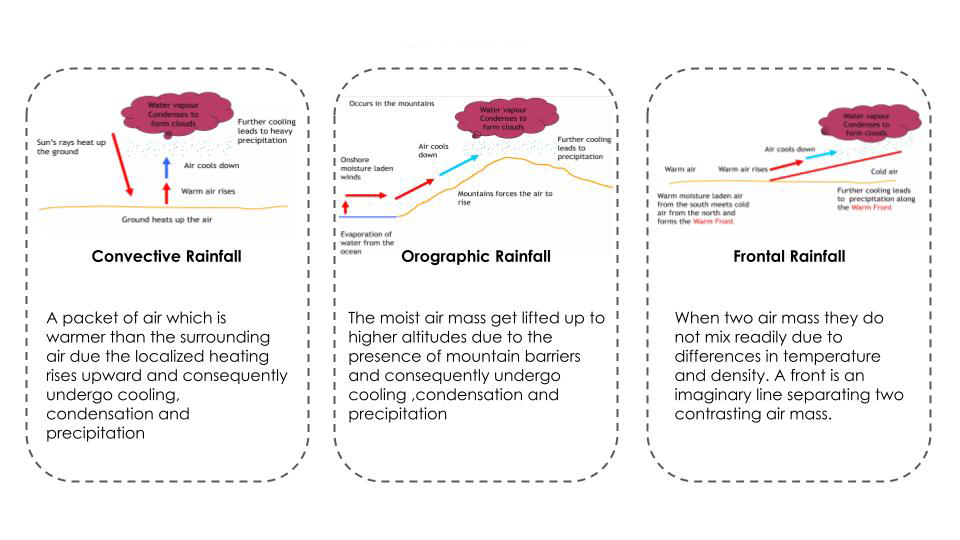
Factors Affecting Rainfall
- Wind speed Higher wind speed leads to higher rainfall. This is because wind speed affects the moisture transport and convergence in the atmosphere, which are essential for cloud formation and precipitation.
- Wind direction wind direction also has a significant correlation with rainfall, depending on the season and the location. For example, in winter, southwesterly winds bring more rainfall than northeasterly winds, because they carry more moisture from the ocean. In summer, the opposite is true, because the land is warmer than the ocean and creates a low-pressure zone that attracts moist air from the northeast.
- Minimum temperature minimum temperature has a negative correlation with rainfall, meaning that lower minimum temperature leads to higher rainfall. This is because minimum temperature reflects the stability of the atmosphere, which affects the vertical motion of air and the development of clouds and precipitation. A lower minimum temperature indicates a more unstable atmosphere, which favors convection and rainfall.
Effects of Rainfall on Different Surfaces
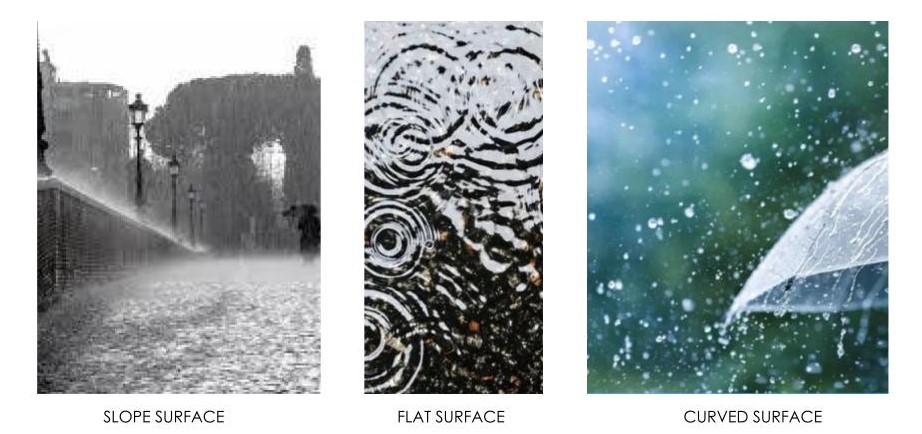
Pseudo Code
